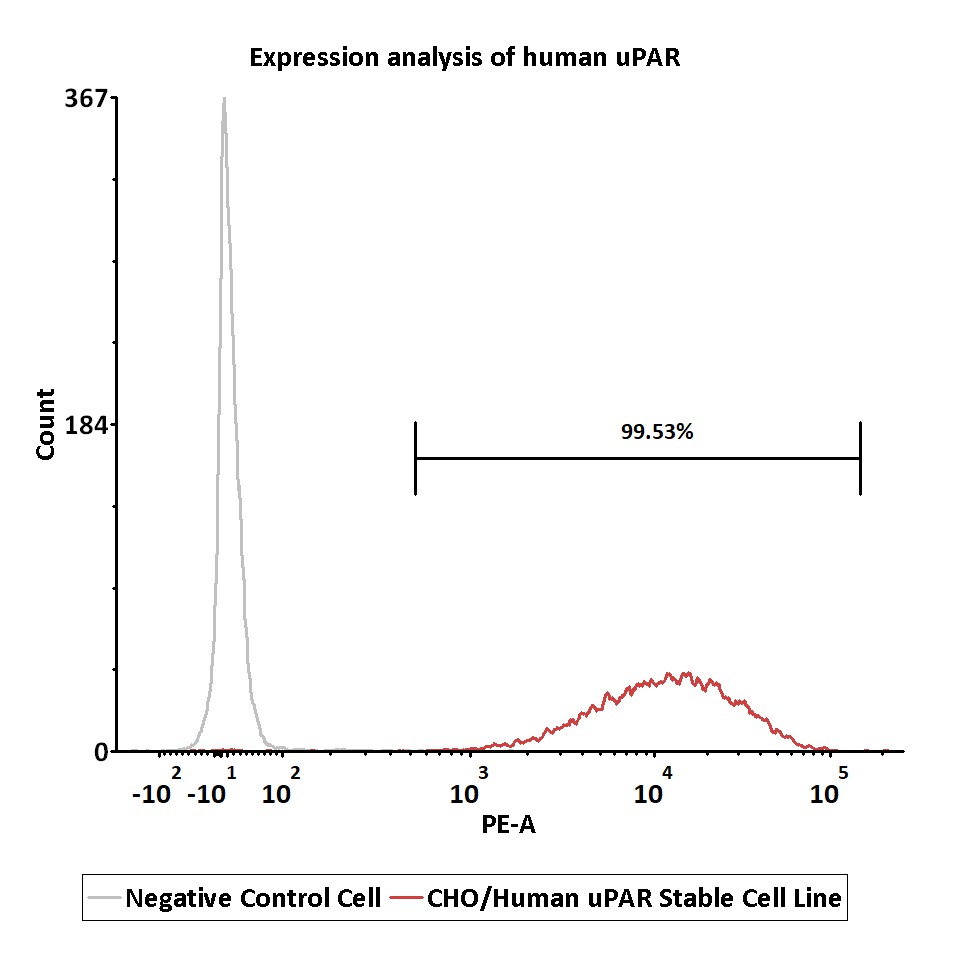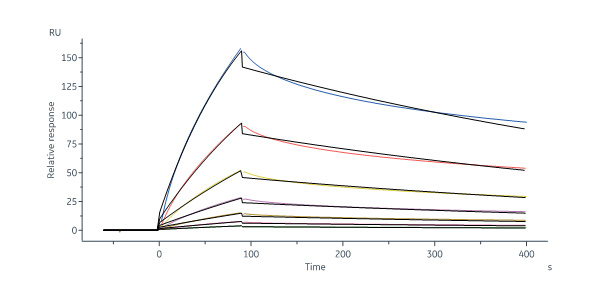 Limited Edition Golden Llama is here! Check out how you can get one.
Limited Edition Golden Llama is here! Check out how you can get one.  Limited Edition Golden Llama is here! Check out how you can get one.
Limited Edition Golden Llama is here! Check out how you can get one.
 Offering SPR-BLI Services - Proteins provided for free!
Offering SPR-BLI Services - Proteins provided for free!  Offering SPR-BLI Services - Proteins provided for free!
Offering SPR-BLI Services - Proteins provided for free!
 Here come GMP Grade Cytokines!Free Sample is available!
Here come GMP Grade Cytokines!Free Sample is available!  Here come GMP Grade Cytokines!Free Sample is available!
Here come GMP Grade Cytokines!Free Sample is available!

Expression analysis of human uPAR on HEK293/Human uPAR Stable Cell Line by FACS.
Cell surface staining was performed on HEK293/Human uPAR Stable Cell Line or negative control cell using PE-labeled anti-human uPAR antibody.

Expression analysis of human uPAR on CHO/Human uPAR Stable Cell Line by FACS.
Cell surface staining was performed on CHO/Human uPAR Stable Cell Line or negative control cell using PE-labeled anti-human uPAR antibody.

Human PLAU, His Tag (Cat. No. PLU-H5229) capture on NTA-Series S sensor chip can bind Mouse uPAR Protein, Fc Tag (Cat. No. UPR-M5253) with an affinity constant of 182 nM as determined in a SPR assay (Biacore 8K) (QC tested).
This web search service is supported by Google Inc.
